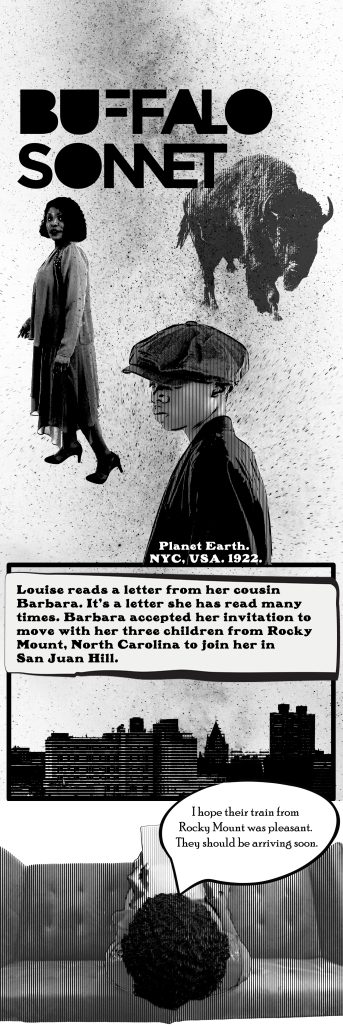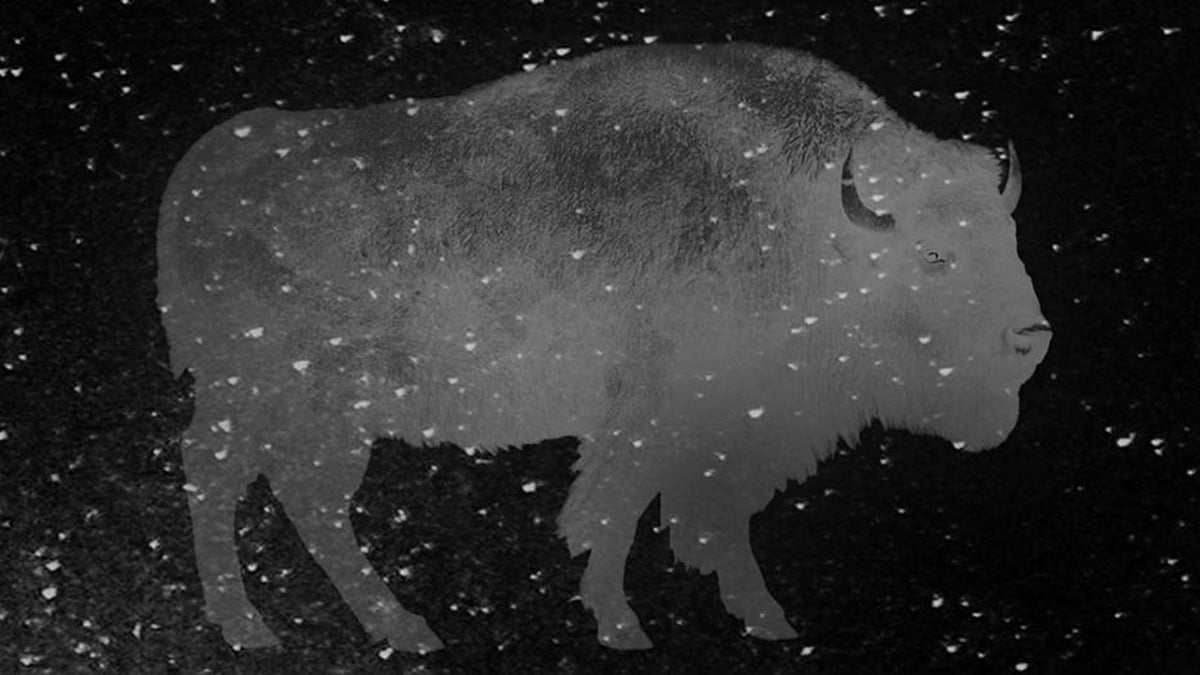Stories of displacement are often stories of lost culture. The people that get pushed out of their communities and their living spaces in favor of new developments that erase what was there before get to witness firsthand how their culture not only becomes a memory of what was but also of what could’ve been. There’s a cruel loss of potential, of all the wonderful things that could’ve been brought to fruition had the community not been the victim of a city’s indifference when planning for the future.
This is what Buffalo Sonnet, a digital comic inspired by San Juan Hill, written and illustrated by Kamau Ware aims to capture. And as part of the Lincoln Center’s “Legacies of San Juan Hill” social history program, it carries on the crucial fight to keep the memories of a robust culture alive.

The digital comic can best be described as a social tour of San Juan Hill, a community that existed in the area that is now Lincoln Square in the Upper West Side of Manhattan back in the early decades of the 20th century. Our guide is a small black boy called Paint, a kid with aspirations to become a generation-defining musician. He’s tasked with getting a few grocery list items from a neighbor that left something behind in her rush to get back home and prepare for the arrival of her cousin from North Carolina.
Paint comes across neighborhood figures in his trek that either converse with him about music and the latest acts coming to the clubs in the area or warn him of dangerous white boys that look eager to dish out a beating. Names like Thelonious Monk and Eubie Blake, iconic Black plays like Shuffle Along, and important stops like the 63rd Street Music Hall are mentioned and illustrated to account for the cultural vibrancy of San Juan Hill. The intention is to decisively establish the community as a place where artistic expression was at boiler point constantly.
Kamau Ware’s black and white approach to the visuals lends the story a documentary-style feel that makes the comic come off as a work of preservation. And yet, it’s whimsical enough, magical even, to capture a sense of wonder that highlights the things that were born, nurtured, and exalted in San Juan Hill.
Ware uses pictures of actors playing his characters along with pictures of real locations to capture the story, adding further to the documentary feel. It all combines for more than just a snapshot of the past. It’s a portrait full of memories, conversing with each other. It invites multiple readings because of this, prompting a deeper exploration of each image, panel, and page to get as much as possible from the social environment that’s captured in it. It’s clear that Ware was very conscious of the responsibility that comes with portraying the history of San Juan Hill.
Buffalo Sonnet does the necessary work of keeping a community’s memory alive. There’s recognition, but there’s a bit of melancholy running through it. It comes with the territory. One can’t really escape the fact of its disappearance, of all the things that could’ve been. But that’s what makes Kamau Ware’s comic so important. Places do find life in acts of remembrance. Buffalo Sonnet is a very welcoming home to such life.
You can access the full comic by clicking here.







